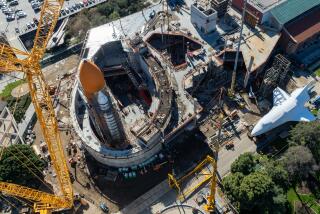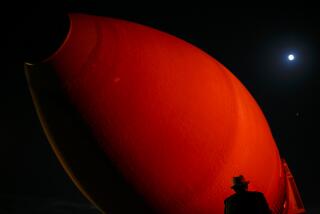Shuttle Returns to Earth After Mission to Map It With Radar
- Share via
CAPE CANAVERAL, Fla. — Space shuttle Endeavour and its crew of six returned to Earth on Tuesday with more than a week’s worth of radar images that will be transformed into the finest maps of the planet.
Commander Kevin Kregel guided the shuttle down through a clear sky moments after sunset. Gusty winds at the runway had forced him to make an extra swing around Earth, delaying the homecoming by 1 1/2 hours.
“Kevin, congratulations to you and the crew on a highly successful mission of mapping the world,” Mission Control radioed once Endeavour rolled to a stop.
During their 11-day voyage, Endeavour’s astronauts worked in round-the-clock shifts to keep two large radar antennas running--one in the shuttle cargo bay and one on the end of a 197-foot mast. The method is expected to produce precise three-dimensional maps of Earth’s peaks and valleys.
The radar mapped 43.5 million square miles of Earth’s terrain at least twice, just 2.5 million square miles shy of NASA’s original goal. The surveyed land stretched as far north as British Columbia and as far south as Cape Horn and represented three-quarters of the world’s terrain.
A faulty thruster on the end of the radar mast forced the crew to use extra shuttle fuel to steady the mast, the longest rigid structure ever deployed in space. To save fuel, the astronauts had to cut short their mapping by 13 hours.
“I thought this mission was one of the most challenging, difficult missions we ever undertook,” said NASA Administrator Daniel S. Goldin. “We deployed a 200-foot boom and held the tip to inches. The radar was a few thousand pounds. The technology was incredible.”
Within three hours of touchdown, technicians had unloaded the more than 300 digital tapes containing all the radar data. After several weeks of making copies, the tapes will be flown to the Jet Propulsion Laboratory in Pasadena.
Scientists will keep the originals in humidity- and temperature-controlled chambers.
The Pentagon will use the information to improve the aim of missiles and provide better navigation for fighter pilots and ground troops.
More to Read
Sign up for Essential California
The most important California stories and recommendations in your inbox every morning.
You may occasionally receive promotional content from the Los Angeles Times.













